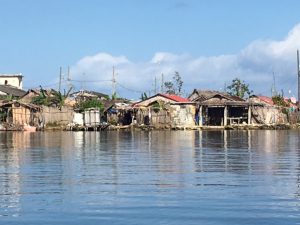Panama, along with other countries in Central America, has set an ambitious goal to eliminate malaria by 2020. It has made substantial progress toward this goal with the number of malaria cases dropping from 1281 in 2007 to 811 in 2016 (a 36 percent decrease). However, important challenges remain to reach elimination. The remaining areas of malaria transmission in Panama are remote, rural, and primarily populated by indigenous people. Approximately two-thirds of all cases originate in one of the three Guna comarcas, autonomous regions controlled by the Guna people.

Eliminating malaria in these remote areas will require innovative approaches.The communities are underserved by the network of health facilities that covers the rest of the country, so nearly 90 percent of malaria cases are diagnosed when Ministry of Health technicians make visits to the communities. Government technicians are responsible for traveling around the region and working with the Guna communities to diagnose, treat, and prevent malaria and other vector-borne diseases, but their numbers are limited and they are unable to be present in all communities at all times. In addition, these technicians use microscopy (requiring a laboratory, microscope and a skilled technician) to confirm malaria diagnosis. Sending the microscope to the laboratory by boat, receiving the result, and finally treating the patient in these regions can take up to a month.
Shortening the time between symptom onset, diagnosis, and treatment is crucial to move Panama closer to malaria elimination. Collecting quality data on all cases will allow the country to further target interventions to where they are needed the most. However, the current structure and capacity of the Ministry of Health in the Guna comarcas is a huge limiting factor in achieving this goal.
There is hope, and it starts with access to quality diagnostics that do not require a degree in laboratory science or even electricity. With a small blood sample, malaria rapid diagnostic tests can allow the person administering the test to achieve a parasitological diagnosis of malaria in 15 minutes, significantly cutting the time between when the blood sample is taken and the patient is diagnosed. These tests are highly durable, accurate, and simple to use, requiring minimal training to be able to administer.
Putting these tools in the hands of members of the community in the Guna comarcas, and giving these individuals the training not only to test, but also to treat and report malaria into the national surveillance system, is one way to ensure that every case is detected and treated.
Community health workers (CHWs) are often the best placed to know not only who in the community might be sick, but also to help them access treatment. Establishing a CHW network in an indigenous region allows the local people to take an active role in their communities to eliminate a disease that has caused sickness and even death.

Malaria-dedicated CHW networks have been hugely successful in countries throughout Central America and beyond, but have a limited history in Panama. To help Panama adopt this promising approach, CHAI began working with counterparts at the Ministry of Health and authorities from the Guna Congress of Cultura to design and implement a pilot project to establish a CHW network in Guna Yala, one of the three Guna comarcas. The overarching goal of the pilot is to demonstrate how this model can strengthen case management and surveillance through community participation.
Forty-six communities across Guna Yala were selected to participate in the initial phase, and each community was invited to select their CHW. In October, the 12-month pilot kicked off with a training of the CHWs in rapid test and microscopy slide preparation, test interpretation, malaria treatment, and reporting. Armed with new tools and knowledge, the CHWs returned to their communities just as peak malaria season began; between October and December. CHWs have already detected 58 cases of Plasmodium vivax, accounting for 48% of all malaria cases reported in the region during this period.
These initial results are encouraging, but the true impact will be determined in October of this year, once the year-long pilot is complete. In the meantime, a cycle of direct supportive supervision and trainings is occurring to detect and address potential issues and roadblocks in a timely manner.
After twelve months, CHAI and the Ministry of Health will analyze the evidence, make revisions to the structure as necessary, and plan a scale-up to include communities in the other Guna comarcas. With the improved involvement of communities, this new model has the potential to help Panama secure its goal of malaria elimination in the next few years.





